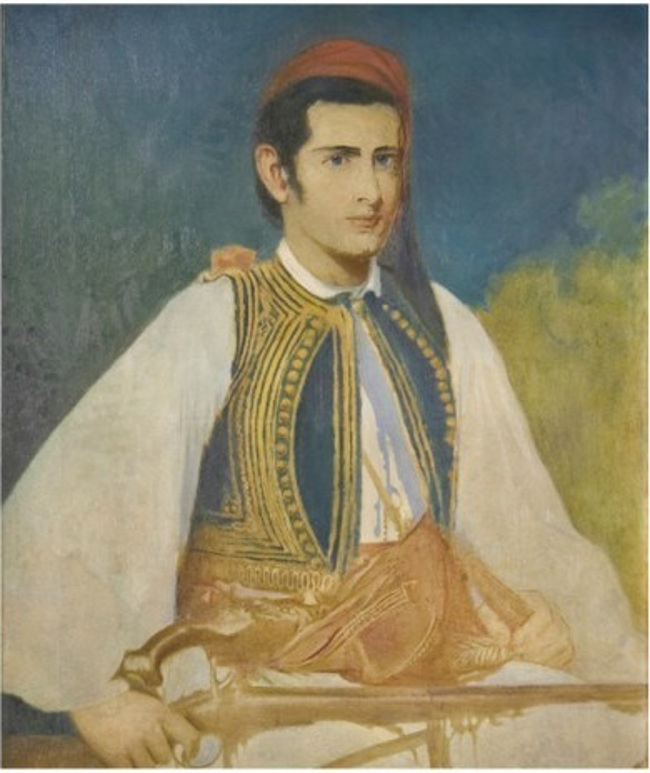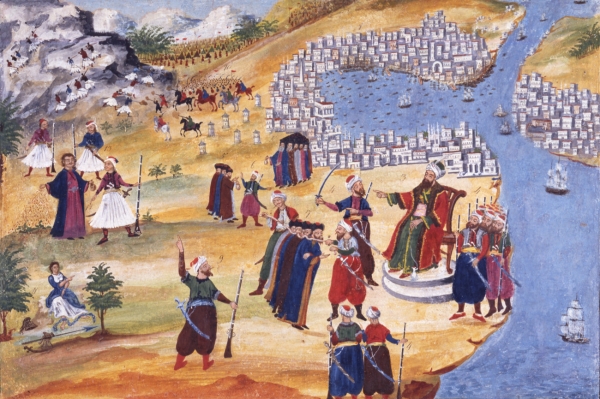Fulbright alumna and Director Maria Georgopoulou talks about the upcoming event:
American Philhellenes and the Glorious Struggle of the Greeks (1776-1866)
To mark the bicentennial of the Greek War of Independence, which reigns supreme among the significant collections of the Gennadius Library, we are organizing an exhibition on American Philhellenism. When, in 1821, the Greeks rose in rebellion after almost four centuries of Ottoman rule, Americans helped to arouse public sentiment and sympathy in favor of Greece, raised money and provisions to aid the cause, and lobbied their representatives to recognize Hellenic independence. The exhibition, which will also be available online, is based on rare archival materials from the Gennadius Library as well as paintings and philhellenic objects from museums and private collections in Greece.
Philhellenes sought to convince the American public that Greece, as the birthplace of western civilization, deserved to be resurrected as a free and democratic state. Due to the government policy of neutrality established by the Monroe doctrine (December 1823), it was Americans as individuals who gathered to support the Greek independence movement and established philhellenic societies throughout the United States, culminating in the so-called “Greek fever.” The exhibition will focus on the actions and biographies of individual actors to flesh out the far-reaching implications of the movement.
The story starts with the power of the Greek ideals that created strong bonds between America and the Greek rebels. The influential Greek intellectual Adamantios Koraes (1748-1833) envisioned a democratic Greece, recapturing the glory of the Golden Age of Pericles. To bolster his claims, he exchanged views on the War of Independence and on the Constitution with one of the Founding Fathers, Thomas Jefferson. Classical education in America had been a linchpin for the Greek revolutionaries. When, in 1821, Greece declared its independence from the Ottoman Empire, its first appeal to America for recognition and support was to the classicist Edward Everett (1794-1865), who had been appointed as the first Eliot Professor of Greek at Harvard at age 21 and had spent some years in Greece before taking his post.
The cruelty of the war, especially the massacre of Chios, and the death of Lord Byron in Missolonghi inspired many young Americans to join the Greek revolutionaries. George Jarvis, a New Yorker, became lieutenant-general in the Greek forces and was known as "Kapetan Zervos." Jonathan P. Miller of Vermont also served in Zervos’ regiment. Samuel Gridley Howe, a Bostonian physician, came to Greece after his graduation in 1824, where he served as a soldier and chief surgeon before returning to Boston to become the head of the Perkins School of the Blind. All three left extensive reports of their activities in Greece.

Not only did these Philhellenes participate in various relief efforts, but they also brought several Greek orphans to the US. Many of the children were educated at Amherst College and pursued important careers in the US or back in Greece.
One of the most interesting parts of the exhibition focuses on education promoted by missionaries. Reverend John J. Hill and his wife Francis established the Hill Memorial School in Plaka in 1831, which is the oldest school in continuous operation in Greece today. The foundations of the academy for teachers the Hills ran was founded on the principles of the Troy Institute of Emma Willard. On the other hand, some of the Greeks arriving in the US fueled the study of medieval and Modern Greek through publications and courses.
In addition to the individuals who came to Greece to fight during the Greek Revolution, the exhibition also explores the intellectual underpinnings of revolutionary discourse that was appropriated in the ideas of abolitionism as well as American philanthropy both in Greece and in the US.
Emphasis is given to a little known topic: the role Greek emancipation played in the progress toward the abolition of slavery in the United States. By highlighting the impact of one of the most famous statues by an American sculptor (Hiram Powers’s The Greek Slave), the exhibit seeks to enlighten viewers about the empathetic connection between Greek victims of Ottoman oppression and African slaves in America.
An Exhibition at the Gennadius Library
American School of Classical Studies at Athens
March 30 – September 30, 2021
Curator: Maria Georgopoulou
Maria Georgopoulou is a medieval art historian and has been Director of the Gennadius Library since 2004.
Image Credits:
Dimitrios Zographos, The Fall of Constantinople, watercolor Illustrating the Memoirs of General Ioannis Makriyannis (1836-9). The Gennadius Library, American School of Classical Studies at Athens
John Elliot, Portrait of Samuel Gridley Howe, oil painting, 1931. The National Historical Museum

